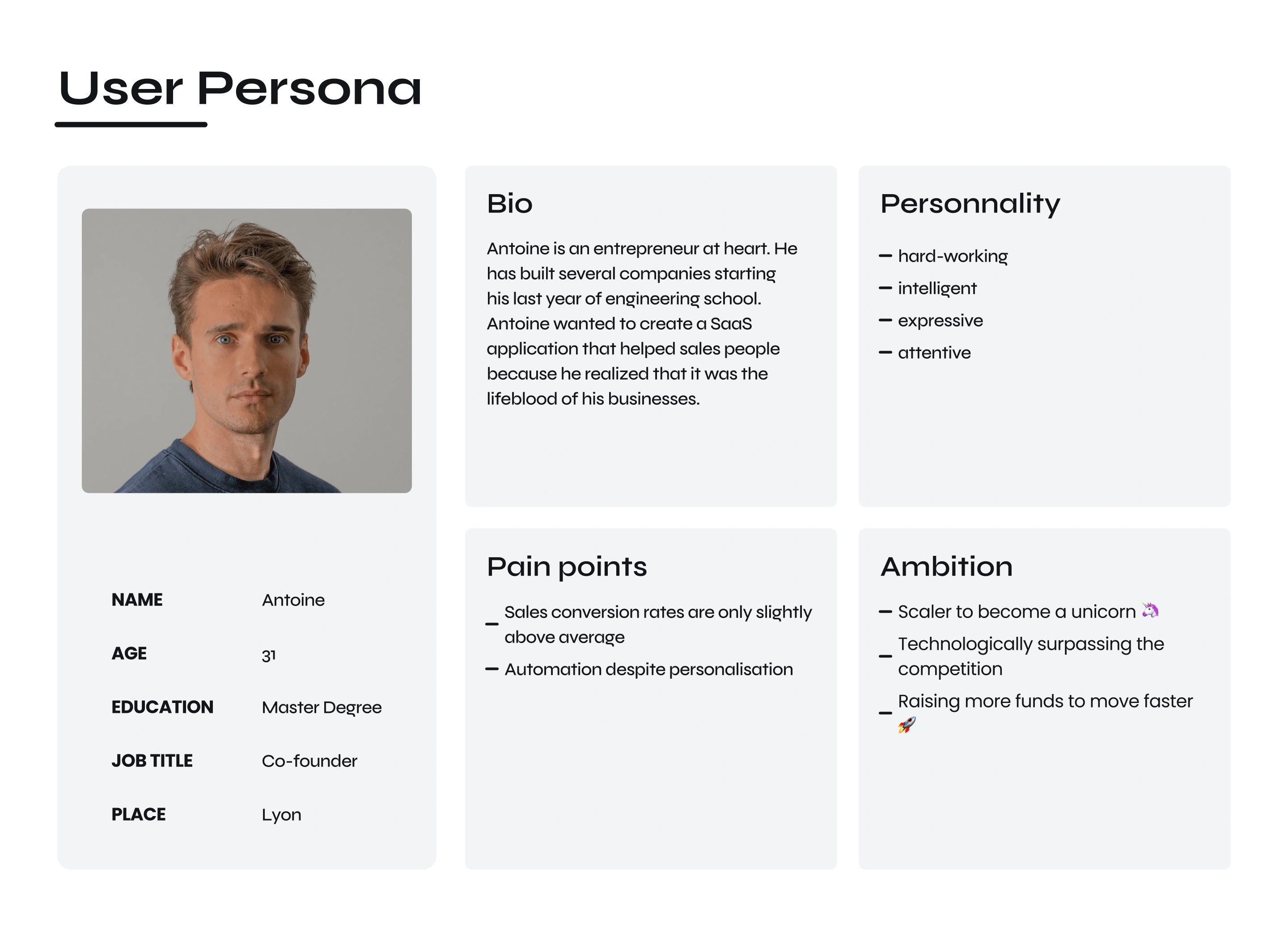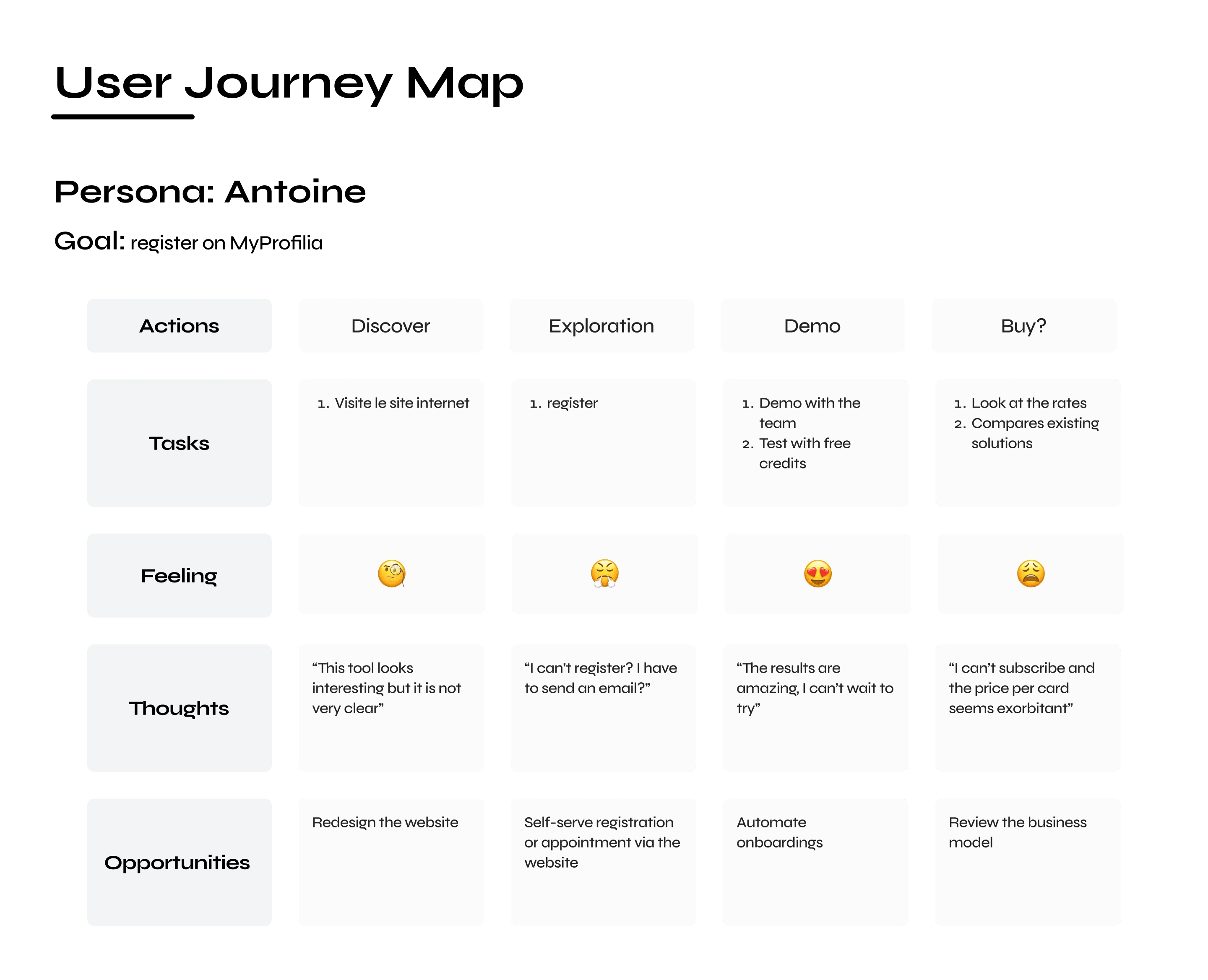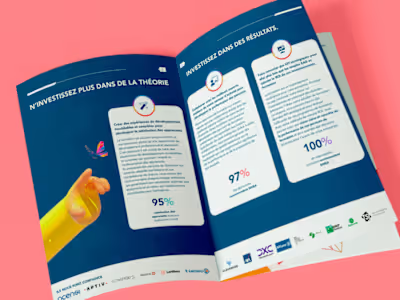Redesign to sell better
Introduction
Project Background:
MyProfilia is a SaaS tool based on the teaching work of the American lawyer and psychologist W.M Marston.
In his book “Emotions of normal people”, he proposes to decipher and describe the behaviour of each person in many situations (stress, challenges, conflicts, etc.)
The DISC model is represented by four components of the model on a disc, separated by two spots-persons and extroverted-introverted axes.
Research Phase
Understanding the Market:
Research involved gathering feedback from early adopters and analyzing market receptivity to psychological profiling in the French business context.



Challenges
Market Adoption Issues:
The innovative concept faced resistance due to the market's unfamiliarity with psychological profiling applied in this manner.
There was a lot of interest, but more importantly, a lot of curiosity. When a trial was scheduled, people used a few credits to analyze their own profiles and often those of their colleagues, but the use ended there.
Based on this observation, several questions had to be addressed:
Is the market mature for this kind of tool?
Is the model suitable?
First hypothesis: The market is not ready
The notion of hyper-personalization reflects the paradigm shift and the emergence of personalization in marketing. It’s an advanced form of personalization based on a new way of thinking and using data in marketing.
Despite strong consumer demand, French companies have not yet achieved this level of personalization in their marketing strategy. Segmentation is initially based on demographic, sociological or purchasing habits. Psychological segmentation is not yet the norm in companies.
Second hypothesis: The model is not suitable
As the market is not mature on this subject, it is necessary to create the adoption of the practice with weak means. The costs are therefore high because the critical mass is not reached.
Numerous interviews with clients and prospects have also shown signs of a less mature market:
first of all the prospective customers do not understand the profit
Prospects can’t imagine what the product costs
And finally they wait for the neighbor to test first.
MyProfilia operates on own funds, with low cash flow. It will not have the means to build a strong identity or invest heavily in marketing.
Conclusion: The API model
We noticed that many SaaS specialized in Marketing/Sales Automation were interested in MyProfilia. The API model would allow the tool to live through other tools and sensitize the myProfilia PKI to the benefits of personalization via the psychological profile.
Design Process
Iterative Design and Prototyping:
I used Figma, Miro, and Principle for rapid prototyping, focusing on simplifying the user interface to promote ease of use and understanding.

Solution Implementation
API Development:
Transitioning to an API model allowed MyProfilia to integrate with existing marketing and sales platforms, subtly introducing its benefits to a broader audience.
Outcomes
Redesign Results:
The API model facilitated easier integration, making the tool more accessible and increasing its practical value for businesses. The solution was then sold to HumanLinker.
Conclusion
Strategic Insights:
This project illustrates the importance of aligning product design with market needs and the potential of UX design to overcome initial market resistance.
Like this project
Posted Apr 17, 2024
Redesigned MyProfilia's UX to better align with market needs, enhancing usability and integration through an API model, boosting user adoption.
Likes
1
Views
10
Clients

Humanlinker








